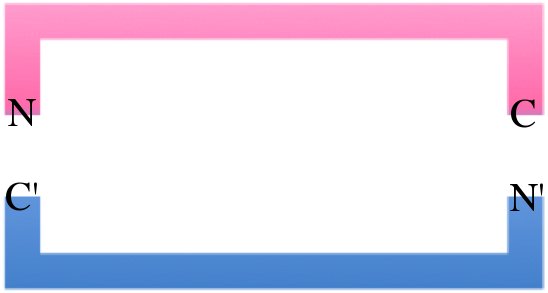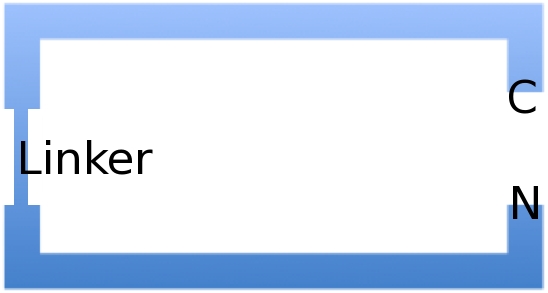Team:Washington/Gram Positive/Design
From 2010.igem.org
| Line 25: | Line 25: | ||
</html> | </html> | ||
<!---------------------------------------PAGE CONTENT GOES BELOW THIS----------------------------------------> | <!---------------------------------------PAGE CONTENT GOES BELOW THIS----------------------------------------> | ||
| + | We have two main goals when redesigning CapD. First we want to make it easier to express and more stable. Second we want to improve the hydrolytic activity of CapD to better cleave Poly-D-γ-glutamate, making it a more potent Anthrax treatment. | ||
| + | |||
| + | Naturally produced CapD auto-cleaves itself to create a dimmer. The new N terminus contains a critical catalytic threonine residue which allows the enzyme to cut Poly-D-γ-glutamate. | ||
| + | |||
| + | To increase stability and expression, we created a circular permutation of CapD. Typically we view the primary structure of proteins as linear, but when the N and C termini are close together after folding, the protein can be though of as a circle with a small gap. Frequently it is possible move the gap by creating a linker between the naturally occurring N and C termini and then changing the starting and ending residues. This works so long as the amino acid sequence remains the same relative to itself (neighboring amino acids still have the same neighbors). For CapD we made the sight that normally auto-cleaves the N terminus, and added a FoldIt designed linker between natural CapD N and C terminus. This circular permeated CapD, aka CapD_CP, is a monomer which give it greater stability and ease of purification. | ||
| + | |||
| + | Since the first residue of any nascent protein must be Methionine, we rely on E. Coli’s naturally occurring Methionine aminopeptidase to remove the first Methionine, making CapD_CP catalytically active. The removal of the first methionine has been verified via mass spectrometry. | ||
| + | |||
| + | |||
| + | |||
[[Image:CapDSimplifiedDiagram.jpg]] | [[Image:CapDSimplifiedDiagram.jpg]] | ||
[[Image:CapDCPSimplifiedDiagram.jpg]] | [[Image:CapDCPSimplifiedDiagram.jpg]] | ||
Revision as of 17:33, 8 September 2010
We have two main goals when redesigning CapD. First we want to make it easier to express and more stable. Second we want to improve the hydrolytic activity of CapD to better cleave Poly-D-γ-glutamate, making it a more potent Anthrax treatment.
Naturally produced CapD auto-cleaves itself to create a dimmer. The new N terminus contains a critical catalytic threonine residue which allows the enzyme to cut Poly-D-γ-glutamate.
To increase stability and expression, we created a circular permutation of CapD. Typically we view the primary structure of proteins as linear, but when the N and C termini are close together after folding, the protein can be though of as a circle with a small gap. Frequently it is possible move the gap by creating a linker between the naturally occurring N and C termini and then changing the starting and ending residues. This works so long as the amino acid sequence remains the same relative to itself (neighboring amino acids still have the same neighbors). For CapD we made the sight that normally auto-cleaves the N terminus, and added a FoldIt designed linker between natural CapD N and C terminus. This circular permeated CapD, aka CapD_CP, is a monomer which give it greater stability and ease of purification.
Since the first residue of any nascent protein must be Methionine, we rely on E. Coli’s naturally occurring Methionine aminopeptidase to remove the first Methionine, making CapD_CP catalytically active. The removal of the first methionine has been verified via mass spectrometry.
 "
"


